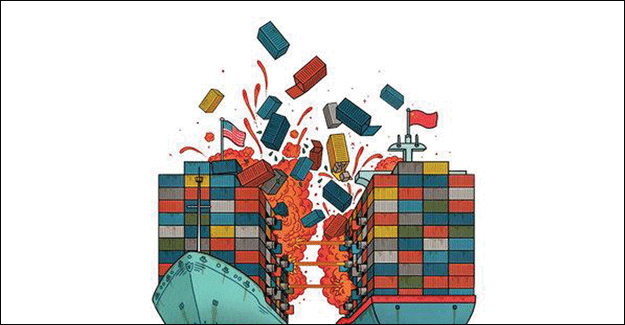
Lessons From An '80s Trade War
An extra two grand for a Harley Hog because of steel tariffs? We can't be wimps in the world of trade, but tariff wars are never good. In the mid-1980s, when Donald Trump was in casino mode and hosting prizefights, the Japanese were knocking out US memory-chip makers. Hitachi instructed salesmen to "quote 10% below their price. If they requote, go 10% again. Don't quit until you win." The company later claimed it was never official policy, but the Japanese controlled 90% of the market for some crucial chips. Something had to be done, right?
In early 1986, President Reagan's Commerce Department cited Section 301 of the Trade Act of 1974 and ruled that the Japanese were selling chips below cost. The administration threatened dumping duties of up to 146% on Japanese memory chips. Never mind the oversupply and industry recession. To avoid duties, Japan came to the table and signed an agreement to limit exports and increase US market share in Japan. Sounds like the current tariff tiff with China? Here's where things got weird. The chip recession continued, and the Japanese didn't live up to the agreement. Memory chips are a notoriously low-margin commodity business. Intel got out of the memory business. So did AT&T.
Getting out of the dynamic random-access memory market, which Japan was dominating, was the best thing that ever happened to US semiconductor industry. Intel focused instead on high-margin microprocessors - the 386, 486 and Pentium. Silicon Valley turned fabless: We'll design (high margin), and they'll manufacture (low margin). We think, they sweat. It's the "Designed by Apple in California. Assembled in China" label.
Memory prices rose as oversupply cleared out and PCs started growing again. Surprise, markets work! Seven months after its initial 301 announcement, the Commerce Department announced that Tokyo was no longer dumping and the duties were canceled. Over time, the Japanese lost market share to Korea, especially Samsung. China is now taking share. Who cares? Good riddance to low-margin businesses, awful uses of capital. The US invests up the margin chain. That's the fallacy of today's tariff war with China: It is meant to save jobs but ends up destroying better ones. By now, it feels like every Chinese import save iPhones are subject to tariffs under Section 301. As President Trump said in February, "I want to bring the steel industry back into our country. If that takes tariffs, let it take tariffs, OK? Maybe it will cost a little bit more, but we'll have jobs."
But not all jobs are equally desirable. It's profits, not sales, that create wealth. We should invest along the productivity fabric. Jobs for jobs' sake destroys wealth. Saving Detroit was a mistake. Should Nike shoes really be made in Oregon? According to the National Economic Council's Larry Kudlow, the US should seek "zero tariffs." Even if China has 25% tariffs, US tariffs should still be zero. While the US is negotiating with China, the government needs to realise that many of the products subject to tariffs shouldn't be made in the US anyway.
Not being wimps means throwing China out of the World Trade Organization or negotiating a free-trade deal. Tax cuts create, tariffs destroy. The "new Nafta" looks okay but is hardly free trade. The market will determine which jobs to keep and which to toss to the sea. Mercantilism has failed again and again, from British Corn Laws to Japanese chips. Jobs will be created where the margins are.
Textile Excellence
If you wish to Subscribe to Textile Excellence Print Edition, kindly fill in the below form and we shall get back to you with details.








